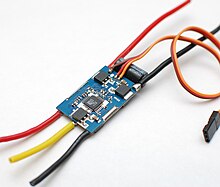I am writing about things that I've discovered about RC planes as I encounter them. This one was one that I had a hard time understanding. My Turnigy battery showed up this week along with my Turnigy charger. It came with an "Octopus cable." That means banana plugs that go into the charger with the same connectors you'll find on a multitester (banana plugs) and about ten charging cables on the other end. But, none of them would fit the battery.
Welcome to the wonderful world of modern RC!
I had to spend some time researching the connector on the battery and figure out what to do next. The connector was an XT60 which is new and fairly common. I was reading what other folks said about it when it first came out. The XT60 seems to be widely approved by the modern generation of RC enthusiasts.
Sticking to one series of connectors.
My first impulse was to use the XT60 connector for everything. I have plans for a smaller plane to be built within the next month or two. Those take smaller cells. Those batteries come with the JST connector and so does one of the ESCs. My ideas was to keep that legit and get a converter cable to throw onto a larger motor plane that usually takes the larger voltage battery. Yes, the motor will still work, though underpowered not for long. I don't plan on doing this often but it would good to see how a plane would with fly with an even lighter battery.
So, the JST connector also stays.
Soldering on connectors.
One of my speed controllers is coming with the wrong connector on it. This is a typical problem. You find something at a good price or in this case it's a rare older product. It's a high amperage speed controller (40 Amps) for a brushed motor. It's coming with a Deans connector. My other speed connectors have no connectors on them.
The one thing the guy at the hobby shop doesn't really tell you is that this is a hobby that involves electricity, and soldering. Oh sure, you can buy the off the shelf planes with the radio and everything else you need in the box. But if you choose to go the route of making things yourself and fixing things yourself you need to get your hands on things.
Soldering isn't something I'm good at, I really haven't had enough practice. I am about to get more practice. As far as soldering wires onto connectors I have a bit of an issue with this. In some situations there may not be an alternative. But it's my belief that the connectors with wires assembled at a factory will have a superior connection than soldered on by hand. This is one area that will get pulled and yanked on all the time.
XT60 connector without wire
This is perhaps a better way to go about it.
Do a solid solder job, bond with a heat shrink tubing for extra protection.The one thing I will mention is if you watch this guy's video he does a lot of automotive soldering. His soldier gets exposed to the elements. So, waterproofing is of importance to him. If your plane gets exposed to the elements for long periods of time it's probably stuck in a tree.
You can skip the silicone paste. The heat shrink should be good enough. Other than that, this is a great video.
A warning about batteries
When you buy LiPo batteries they usually come charged. Keep that in mind if you decide to cut the ends off and put on another adapter. Be careful not to short the wires.
Take your time, do it right.
Chances are good that you have a fair amount of time and money invested in your plane A faulty connection spoils the fun. It can cause intermittent power issues and potentially put the plane out of control. I am planning to make good electrical connections a top priority.





No comments:
Post a Comment